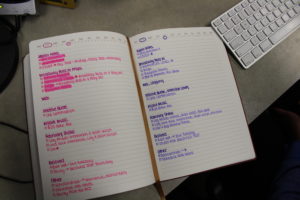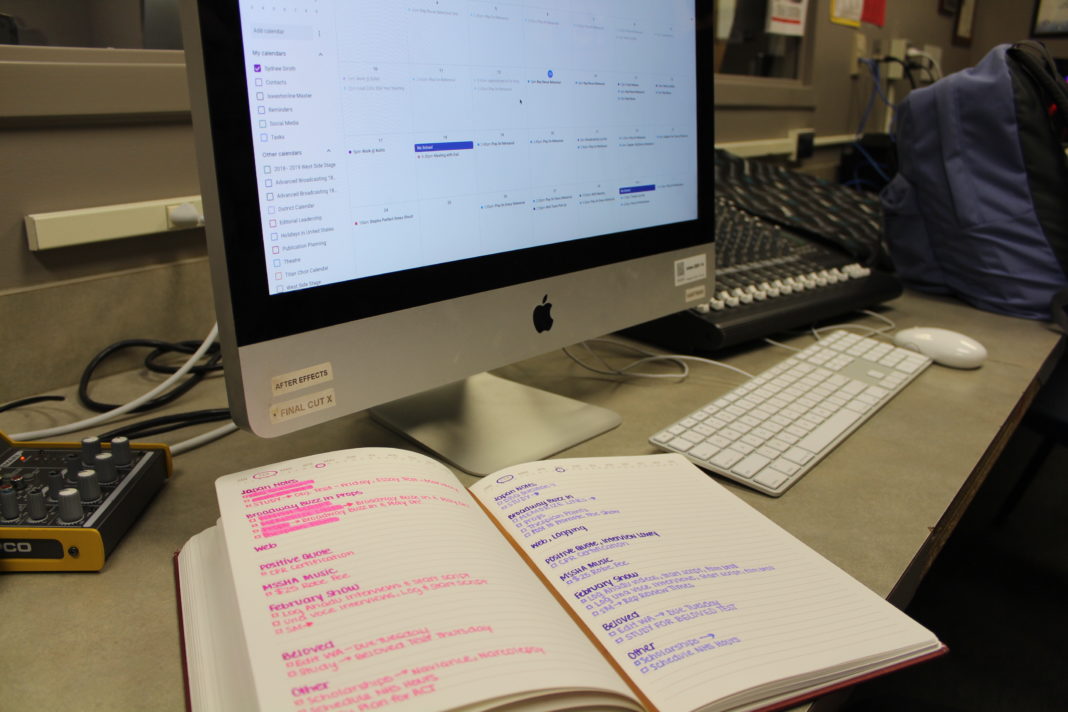Sophie Berning and Anna Eulinger
New reports and research such as that done by the American Psychological Association, found that high school students continue to report higher levels of stress than adults — levels that would be considered unhealthy and detrimental to physical and mental health.
On the APA’s 10-point scale teens rated their stress as 5.8, whereas the healthy rate is 3.9.
Junior Kyley Williams said she experiences stress because of her large workload. “Trying to stay on top of being in five clubs, working and being an IB Diploma candidate causes me the most stress. Learning that some nights I’m not going to get any sleep is a bit hard for me and makes me stress out,” Williams said.
With a large amount of responsibility, the need for organization and planning comes about. A few activities a student might have to remember are: when assignments are due, which days they work, which club they have on which day of the week when their sports practice is and the list goes on.
“I try to stay organized by going out at least once a week and trying to tackle as much as possible to keep everything else during the rest of the week in order. I keep a short-term and long-term list in my planner,” Williams said.
Sophomore Faith Salamone uses a method of planning similar to Williams’ that she said she likes and that other students could find beneficial to them as well.
“I use planners. I have a calendar on my wall,” Salamone said. “I create a schedule of sorts for me to complete my homework.”
Salamone said even with all her planning she still finds herself stressing about her workload and due dates of pending assignments. She said it is because she has all the control into everything that goes into her final grades.
“The due dates cause stress because they are pressure to get things done quickly, which sometimes causes me to turn in things I do not feel are completely ready to be turned in, or stay up way too late finishing them,” Salamone said.
Even though freshmen don’t receive the same workload as an upperclassman, they can still experience stress. Freshman Catherine Ward says she stresses about completing make-up work.
The school’s policy on makeup work is one day for each day missed. Ward said that because teachers continue to assign homework regularly students who miss school can become overwhelmed with the amount work needed to be done in such a short time.
There are ways to de-stress and Williams said she enjoys using facemasks, eating ice cream and taking naps in order to relieve the stress of school. Salamone said swimming helps relieve any stress she is experiencing and both her and Ward said they like to read books chosen by them — not assigned by teachers — to de-stress as well.
Students can also relieve some of their stress by cutting out activities that they aren’t fully enjoying or classes that will not help them in the future.
“I try to limit my stressful experiences, as I know they can hurt me both mentally and physically,” Ward said.
Unfortunately, there is a stressful situation in most things. De-stressing by taking time for self-care, talking to a counselor or close teacher, planning a schedule and not procrastinating are just a few ways students can help themselves stay stress-free.
“I hope that my educational and entertaining experiences can outweigh the significance of my occasional high-stress levels,” Ward said.

What studies say on stress, depression, anxiety
Stress, depression, anxiety: these words have become a commonality in the everyday lives of so many high school and college students. According to the Anxiety and Depression Association of America, anxiety is one of the most common forms of mental illness. In fact, stating that it affects about 264 million people worldwide.
The ADAA reported that everyone experiences anxiety and stress at some time in their lives. Anxiety is the body’s way of reacting to stress and according to the American Psychological Association, there are three different types of stress: acute, episodic acute and chronic.
Acute stress is the most common, according to the APA, and comes from pressures from the recent past and from the near future. This form is not long-term and isn’t detrimental to a person’s physical and emotional health.
Episodic acute stress is made up of many acute stressors that happen in a similar time frame. APA described it as, “They’re always in rush, but always late. If something can go wrong, it does. They take on too much, have too many irons in the fire, and can’t organize the slew of self-inflicted demands and pressures clamoring for their attention. They seem perpetually in the clutches of acute stress.”
Chronic Stress, according to APA, “is the grinding stress that wears people away day after day, year after year. Chronic stress destroys bodies, minds and lives. It wreaks havoc through long-term attrition.”
The last thing that many teens find themselves facing is depression. In fact, according to the ADAA, depression is the leading cause of disability among people age 15-44 in the United States. Depression is the manifestation of a low mood, such as sadness or worthlessness, that is persistent and severe.
The ADAA reported that depression is most common in women and that most people who have depression fail to realize that they need help, therefore the disorder going untreated.
Anxiety, stress and depression are real issues that many people across the entire nation face. However even though these disorders seem large and overwhelming, they can be treated and managed with the help of others.














